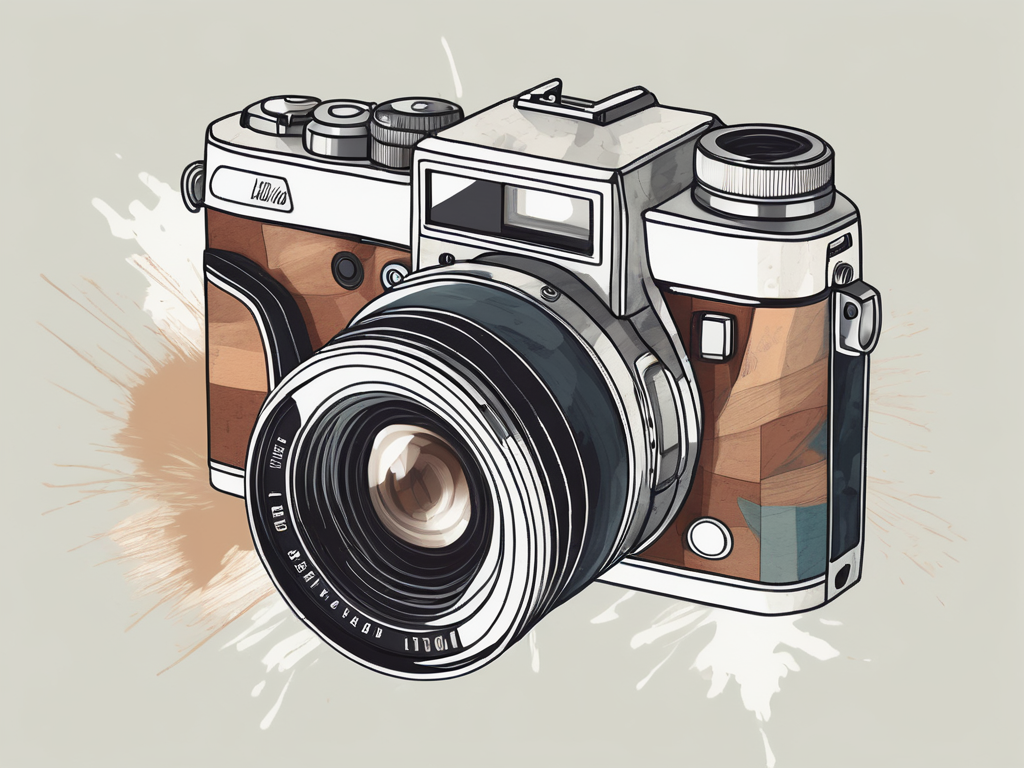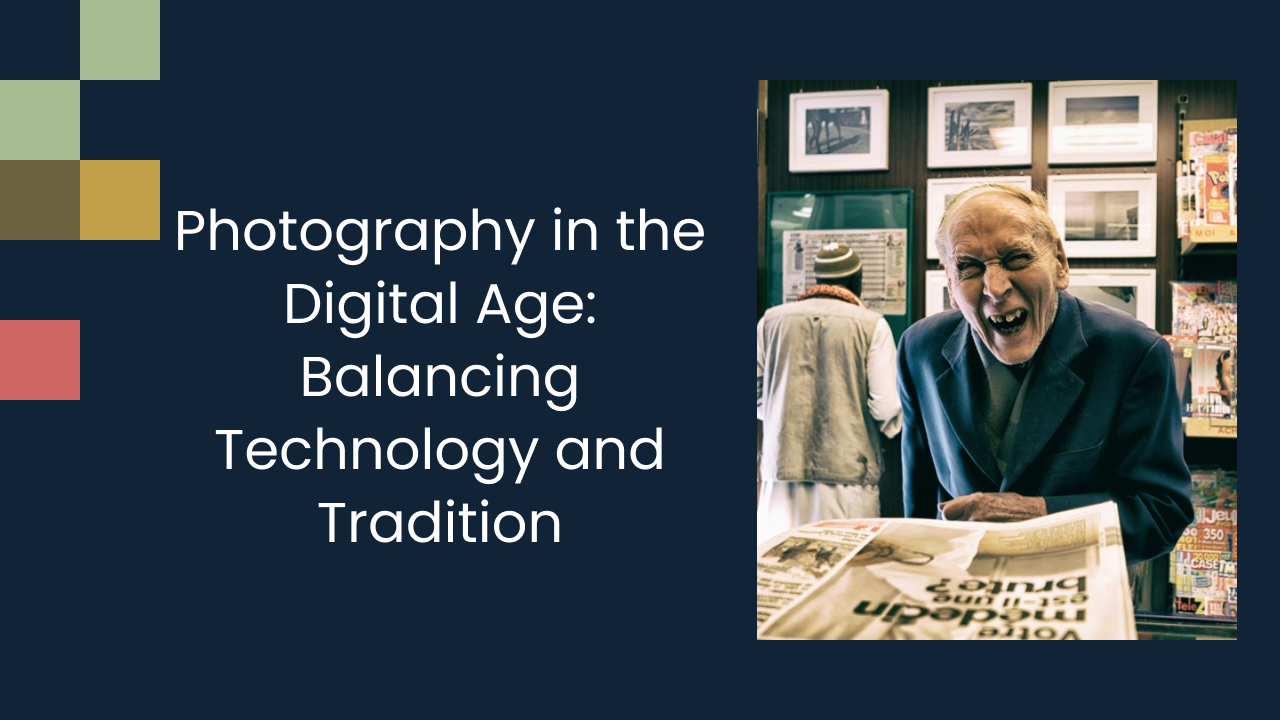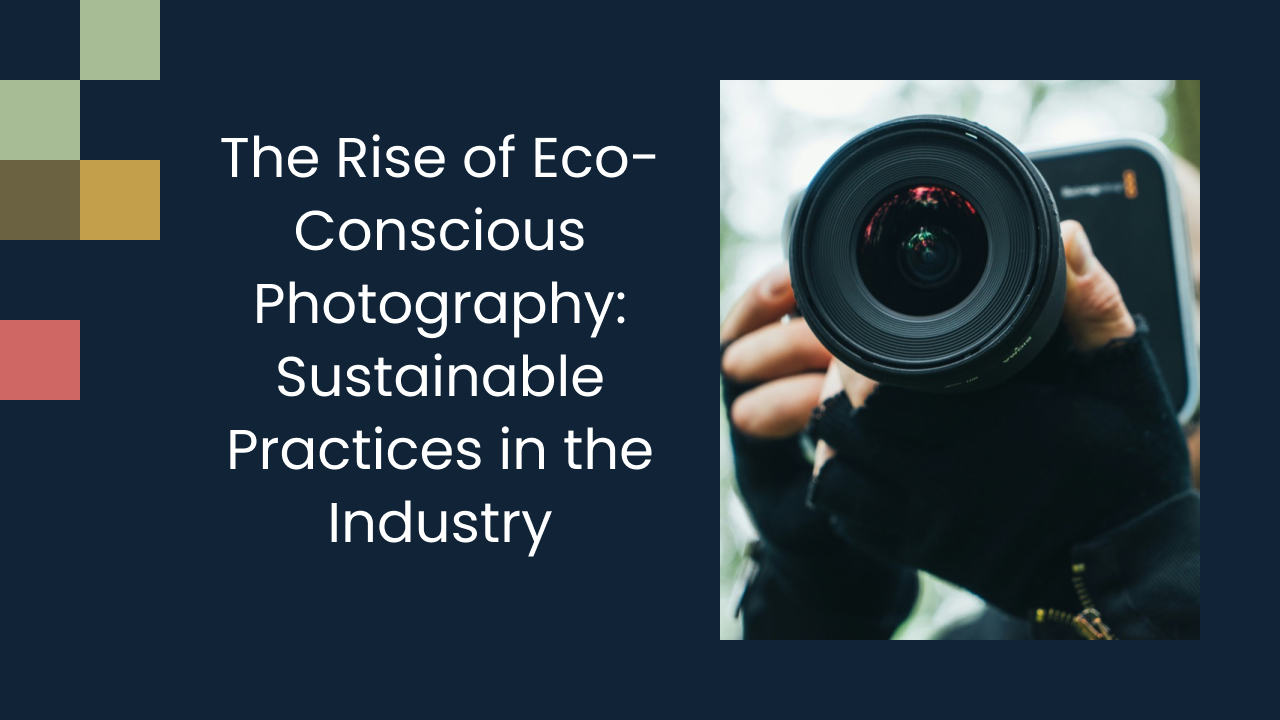Photography in the Digital Age: Balancing Technology and Tradition

In the ever-evolving world of photography, the advent of digital technology has revolutionized the way we capture and share images. As traditional film photography makes way for digital cameras, photographers find themselves at a crossroads, trying to balance the convenience and capabilities of modern technology with the charm and authenticity of traditional methods. This article explores the shift from film to digital photography, the impact of technology on the art form, and the importance of preserving and embracing both tradition and innovation.
Understanding the Shift from Film to Digital Photography
Photography has come a long way since its humble beginnings. The evolution of photography has been driven by advancements in technology, from the discovery of the camera obscura to the invention of the first digital camera. With film photography, photographers had to carefully consider each shot, as they had a limited number of exposures per roll. However, the shift to digital brought about a new era, allowing photographers to take countless photos without the worry of running out of film. This shift changed the way we approach photography, enabling us to experiment and learn from our mistakes without the fear of wasting costly film.
But with this shift came a debate: does the convenience of digital technology outweigh the charm and nostalgia associated with film? Let's delve into the key differences between film and digital photography.
The Evolution of Photography
Throughout history, photography has constantly evolved. From the first black and white images captured on large format cameras to the digital age we live in today, technology has played a pivotal role in shaping the art form. The ability to capture a moment in time and preserve it forever has fascinated and inspired generations of photographers.
As technology advanced, so did the tools available to photographers. The introduction of color film brought a new dimension to photography, allowing for the vivid representation of the world around us. Photographers could now capture the vibrant hues of a sunset or the delicate shades of a flower with greater accuracy. This breakthrough sparked a wave of creativity and exploration, as photographers sought to push the boundaries of what was possible.
Key Differences between Film and Digital
While film and digital photography share similarities, they also have distinct differences. Film photography is often praised for its unique aesthetic and the element of surprise. Each roll of film has its own characteristics, resulting in unpredictable yet captivating images. The grain, texture, and color rendition of film create a nostalgic and timeless quality that is hard to replicate with digital technology.
On the other hand, digital photography offers instant gratification, allowing photographers to see the results of their shots immediately, and the ability to edit and manipulate images with ease. The digital era has opened up new possibilities for photographers, with advancements in sensor technology and image processing algorithms. The ability to shoot in low light conditions, capture high-speed action, and experiment with various shooting modes has expanded the creative horizons of photographers.
Despite the convenience and versatility of digital photography, there is still a dedicated community of film enthusiasts who appreciate the tactile experience and craftsmanship involved in shooting with film. The process of loading a roll of film, carefully composing each shot, and waiting for the film to be developed creates a sense of anticipation and connection to the art form.
In conclusion, the shift from film to digital photography has revolutionized the way we capture and experience images. Both mediums have their own unique qualities and appeal, and the choice between film and digital ultimately comes down to personal preference and the desired outcome. Whether you prefer the timeless charm of film or the convenience of digital, photography continues to evolve, pushing the boundaries of what is possible and inspiring us to see the world through a different lens.
The Impact of Technology on Photography
The advancement of technology has not only changed the way we capture images but has also revolutionized the post-processing stage of photography. Software such as Adobe Photoshop and Lightroom have become essential tools in a photographer's arsenal. These software programs offer a myriad of possibilities for enhancing and retouching images, giving photographers greater control over the final result.
Beyond software, social media has transformed the way we share and consume photography. Platforms like Instagram have provided photographers with a global audience, allowing them to showcase their work and connect with like-minded individuals. However, this rapid sharing of images has also raised questions about the authenticity of photography and the role of the photographer in the digital age.
The Role of Software in Modern Photography
Software has become an integral part of the modern photographer's workflow. With the ability to fine-tune exposure, adjust colors, and remove imperfections, photographers can achieve their desired artistic vision. However, this reliance on software has sparked debates about the line between artistic expression and manipulation. After all, where do we draw the line between enhancing an image and altering reality?
Furthermore, the evolution of software has not only impacted the post-processing stage but has also transformed the way photographers capture images. With the advent of advanced camera technologies, photographers can now shoot in RAW format, which captures a higher level of detail and allows for more flexibility in editing. This technological advancement has opened up new creative possibilities, enabling photographers to push the boundaries of their art.
The Influence of Social Media on Photography
The rise of social media platforms has drastically changed the way we consume and interact with photography. With a few taps on a smartphone, we can view and engage with an endless stream of images. This instant access to photography has democratized the art form, allowing aspiring photographers to gain exposure and recognition. However, the onslaught of images can also lead to oversaturation, making it challenging for unique and thought-provoking work to stand out in a crowded digital landscape.
Moreover, social media has not only changed how we view photography but has also influenced the content itself. The pursuit of likes and followers has led to the rise of trends and popular aesthetics, shaping the type of images that gain traction on these platforms. This phenomenon has sparked discussions about the impact of social media on creativity and the pressure to conform to certain visual standards.
Balancing Tradition and Innovation in Photography
While technology and innovation have brought undeniable benefits to the realm of photography, it is crucial not to overlook the importance of honoring tradition and preserving the art form's roots.
Photography, as an art form, has evolved significantly over the years, with advancements in technology continuously shaping the way we capture and perceive images. The interplay between tradition and innovation is a delicate dance that photographers navigate in their creative journey, seeking to blend the time-honored techniques of the past with the cutting-edge tools of the present.
Preserving the Art of Film Photography
Film photography holds a significant place in the history of photography. The tangible nature of film and the anticipation of waiting for the images to be developed add a level of excitement and nostalgia that digital photography cannot replicate. As technology advances, it's vital that photographers continue to practice and appreciate the art of film photography, ensuring its preservation for future generations.
The process of shooting on film, from carefully selecting the right film stock to the meticulous development process in the darkroom, embodies a sense of craftsmanship and artistry that is deeply rooted in the history of photography. Each roll of film captures not just an image but a moment frozen in time, a piece of history that reflects the unique vision of the photographer.
Embracing Digital Techniques without Losing Tradition
While film photography has its charm, embracing digital techniques can open up a world of possibilities. With digital cameras becoming increasingly sophisticated, photographers can experiment with different styles and techniques that were once unattainable. It's essential to strike a balance between utilizing digital advancements while staying true to the principles that make photography an art form.
From high dynamic range imaging to composite photography, the digital realm offers photographers a playground of creative tools to explore and push the boundaries of visual storytelling. However, amidst the allure of digital manipulation and instant gratification, it is crucial for photographers to retain an appreciation for the foundational aspects of photography, such as composition, lighting, and storytelling, which transcend the medium through which the images are captured.
The Future of Photography: A Blend of Old and New
Looking forward, it's clear that photography's future lies in a harmonious blend of old and new. Predictions for the evolution of photography foresee continued advancements in technology, pushing the boundaries of what is possible. However, regardless of the technological advancements, the role of the photographer will always be pivotal. The ability to capture a moment, evoke emotions, and tell a story through a single frame is a skill that transcends technology.
Predictions for the Evolution of Photography
As technology continues to evolve at an unprecedented pace, the future of photography holds endless possibilities. From advancements in sensors and lenses to virtual and augmented reality experiences, photographers can anticipate exciting developments that will shape the future of the medium.
The Role of the Photographer in the Digital Age
While technology has undoubtedly changed the landscape of photography, it is essential to remember that the camera is merely a tool. The true essence of photography lies within the photographer's vision, creativity, and ability to tell a story through their images. In the digital age, where everyone has a camera in their pocket, it is the photographer's unique perspective that sets them apart.
As photography continues to evolve in the digital age, the art form finds itself at a delicate junction. Balancing technology and tradition is crucial for photographers seeking to create meaningful and impactful images. By understanding the shift from film to digital, embracing technology while preserving tradition, and envisioning the future of photography as a blend of old and new, photographers can navigate the ever-changing landscape of photography with confidence and creativity.
Looking for an easier way to manage and grow your studio? Experience a platform built by a photographer, for photographers. Try it free for 2 weeks.











